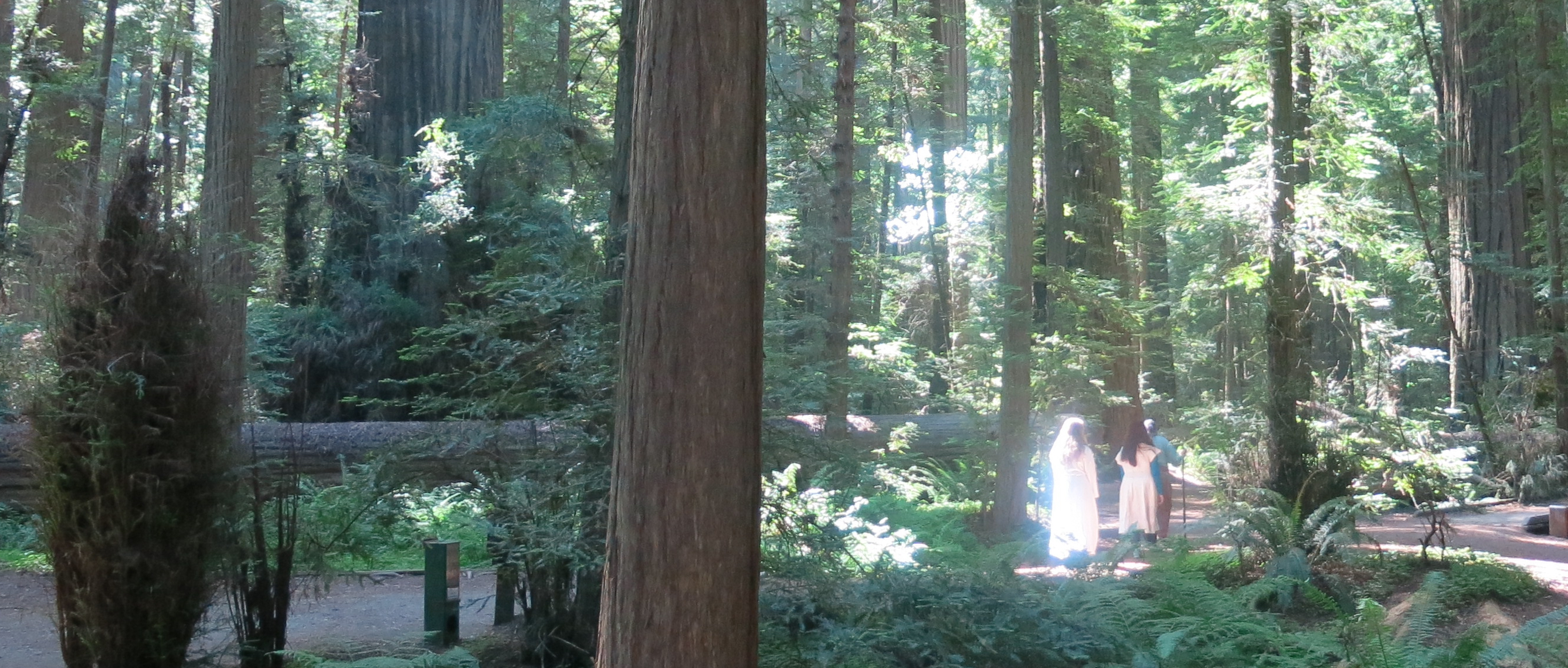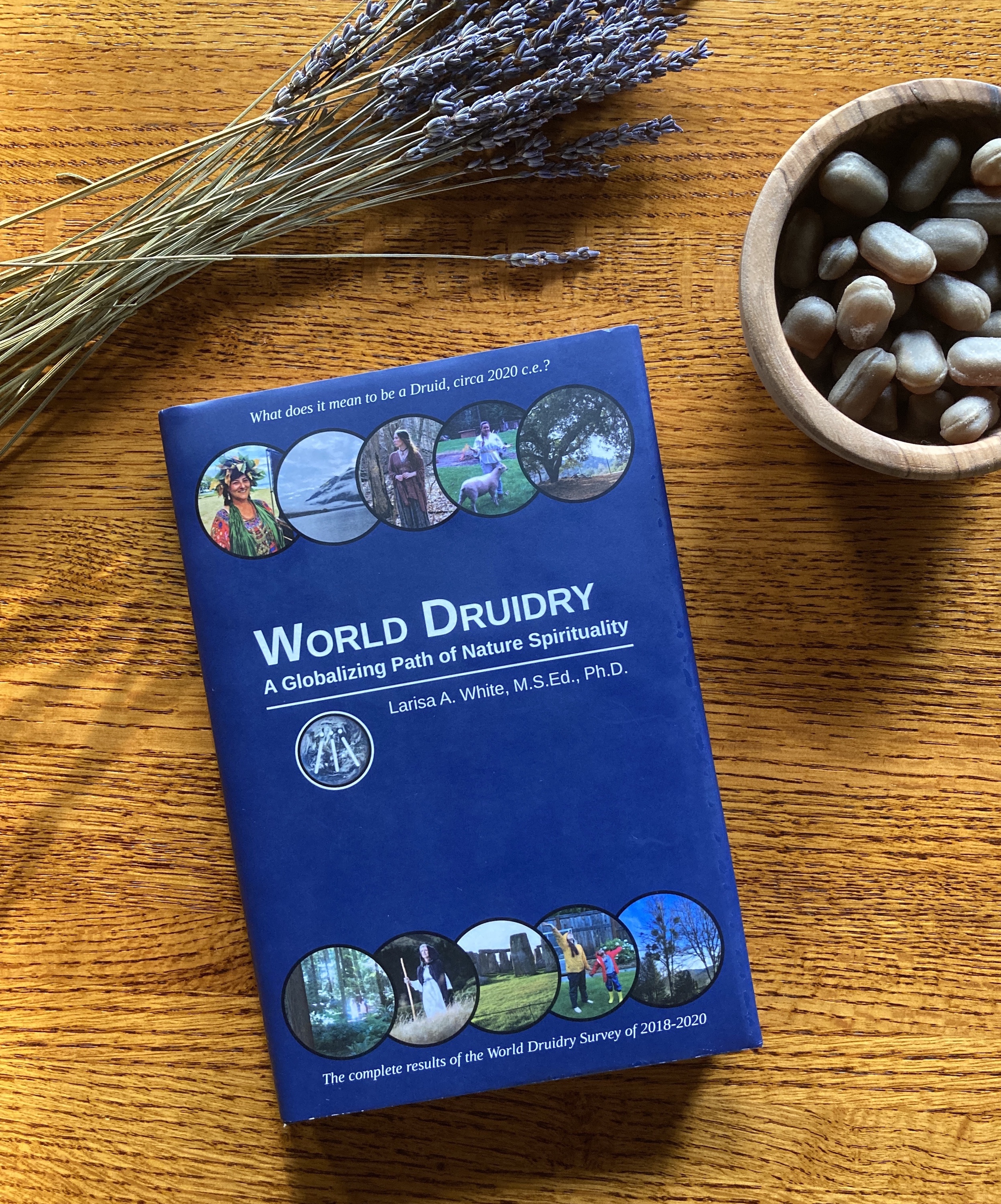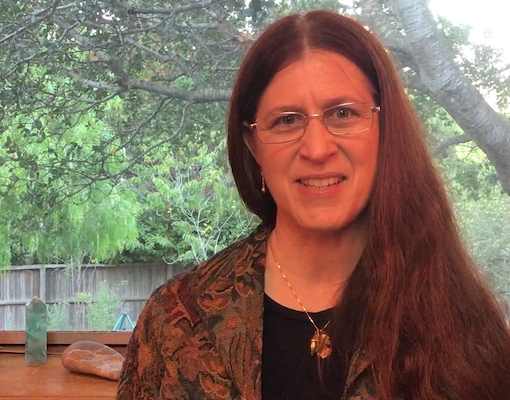


”If anybody wants to know what modern Druidry is like, across the world at the present day, then this is the book which provides the answer. It is researched to rigorous standards of academic scholarship, while also allowing Druids to speak in their own many voices, unmediated. No other work brings out so clearly what they have in common, and what distinguishes them between groups and nations. It is an excellent achievement."
— Ronald Hutton
Professor of Divinity, Gresham College, U.K.
Professor of History, University of Bristol
Author of "Blood and Mistletoe: The History of the Druids in Britain"
by Larisa A. White, M.S.Ed., Ph.D.
Mythic images of moonlit oak forests, and sickle-wielding, white-robed sages abound, but is there really such a thing as a modern-day Druid? If so, what do modern-day Druids believe? What are their religious and spiritual practices? How do their beliefs and practices vary across Druid groups, countries, cultures, and regional landscapes? What, if anything, do the Druids of the world have in common?
Easy to read, and richly illustrated with hundreds of direct quotations from 725 practicing Druids, in 34 countries, and 147 Druid groups around the globe, World Druidry presents the findings of the World Druidry Survey of 2018-2020, the first rigorous, sociological study of contemporary Druidry as a fast-growing, international new religious movement.
In an era plagued by climate-anxiety and eco-despair, reading true stories of practicing Druids — who are working to cultivate honorable relationships with Nature — was a truly uplifting experience for me as a researcher. I hope you find their stories inspirational, as well.
World Druidry: A Globalizing Path of Nature Spirituality is currently available in hardcover, paperback, and eBook editions. Order your copy today!
Print Editions
Buy Hardcover (US$48.00) Buy Paperback (US$36.00)eBook Editions (US$19.99):
Buy on Kindle Buy on Kobo Buy on ApplePrint editions may also be ordered via most major book retailers, world wide, using the following identifiers:
Title: World Druidry: A Globalizing Path of Nature Spirituality
Author: Larisa A. White
Publication Date: 2021
Hardcover: (ISBN: 978-1-7367792-0-0)
Paperback: (ISBN: 978-1-7367792-1-7)
Library of Congress Control Number: 2021904656
Libraries and book retailers may order physical copies via Ingram.
Libraries may obtain digital copies via OverDrive.
"World Druidry offers a fascinating and unrivalled survey of contemporary Druidry internationally. It is enlightening about attitudes and activities, clarifies dynamic frictions between individuality and community, and traces generational changes. Among many virtues, its inclusion of the many voices of diverse Druids will make this an invaluable resource for researchers and practitioners alike."
— Graham Harvey
Professor of Religious Studies, The Open University, UK
Author of "Animism: Respecting the Living World"
"I highly recommend this book to anyone who wants to know more about today’s Druids: who they are, what they believe, and what they practice. Anyone who is considering taking up a form of Druid practice will also find this book of value. It fleshes out the bare-bones information available on the websites of Druid groups with rich tales about what today’s Druids actually believe and do. [...] It is the best description of contemporary Druid practice available. Finally, I strongly recommend the book to theologians as a contribution to contemporary religious theologies outside of the major world religions." (Read the full review.)
— Claire L. Schlosser
Archdruid of Water for the Ancient Order of Druids in America
"If you’ve ever wondered what modern Druids believe and what they get up to inspired by their beliefs, then this book is a must for you. It had already created quite a buzz in the Druid community prior to its publication and it not only lives up to expectations but exceeds them. [...] Nothing like it has been attempted before and it will undoubtedly stand as a definitive work for years to come, informing current researchers and hopefully inspiring further research on its subject as well as providing unprecedented insights for the general reader. [...] A final thing to commend the book is simply its look and feel. The hardback is a thing of genuine beauty. The attractive, dark blue dust jacket is printed on a high quality paper that feels like velvet while the book inside is fully cloth-bound in a matching shade of blue. It’s a joy to handle, the text clear and readable, the photographs well-chosen and clearly reproduced. In bringing together such a wealth of information and presenting it with such crystal clarity, Larisa A. White has done a great service to the Druid community [...] I therefore wholeheartedly and unreservedly recommend this unique and fascinating book." (Read the full review.)
— Philip Shallcrass
Founder of the British Druid Order
"This is the book you want to show your friends if you are a Druid trying to get them to understand who you are. This is the book you want to show your family if you are a Druid and wanting them to accept you. [...] I highly recommend this book for its non-biased, well-educated, impartial views on Druidry today, as well as for the insights from Druids all over the world. It was a joy to read." (Read the full review.)
— Heather Mc Erlean, United States
"If anybody wants to know what modern Druidry is like, across the world at the present day, then this is the book which provides the answer. It is researched to rigorous standards of academic scholarship, while also allowing Druids to speak in their own many voices, unmediated. No other work brings out so clearly what they have in common, and what distinguishes them between groups and nations. It is an excellent achievement."
— Ronald Hutton
Professor of Divinity, Gresham College, U.K.
Professor of History, University of Bristol
Author of "Blood and Mistletoe: The History of the Druids in Britain"
"Fascinating Research. Here we have the first worldwide survey of Druidry as a contemporary spirituality followed by thousands of people on all continents. Larisa White's detailed analysis of her survey, which was completed by 725 in six languages from 34 countries, offers a fascinating insight into a spiritual, and for some, religious approach that is set to become increasingly significant as we struggle to preserve the ecological integrity of the Earth. Highly recommended!"
— Philip Carr-Gomm
Chosen Chief of the Order of Bards, Ovates, and Druids (emeritus)
"This is a fantastic resource showing the diversity of views and practices among Druids today. Larisa White’s World Druidry survey has found Druids engaging with their environments in Europe, the US, Australia, South America and in many other locations with some surprising commonalities as well as differences. This volume is invaluable for anyone interested in finding out more about contemporary Druids."
— Suzanne Owen
Reader in Religious Studies, Leeds Trinity University
"What makes this a joy to read are the writings chosen from the personal testimonies of the hundreds of practising Druids from around the world that supplemented their answers. Some are quite stark, others have a lyrical quality, but all are deeply felt, sincere and refreshingly without any hint of the evangelism that pervades other religious writings." (Read the full review.)
— Jon Grundy, England
"Whatever the future holds for humankind, it will be the same future for all in Nature. This book explains how ordinary people with new perspectives are both caring for and working with Nature and all its denizens as we live our lives and face that future together. When you read this book, you will find not just a new way of thinking, living and believing but also true hope, for us and for all in the Natural World. I cannot recommend this outstanding book too highly." (Read the full review.)
— Malcolm Brown,
Founder of the Isle of Wight Order of Druids
"With this book, the written history of Druidry has now entered a fourth stage. The first stage were the writings of antiquity. The second, the personal writings of the Druid pioneers of the late 20th / early 21st Century such as Carr-Gomm, Shallcrass and Restall-Orr. The third, the academic histories of the Druids as revealed by the likes of Hutton et al. Now we have a book which, for me, is probably the most important Druid book in the last 10 years. [...] Using questions formulated in conjunction with many leading Druid figures, Larisa A White delves into the "what, how and why" of the Druidry practised by modern day Druids from around the World."
— Neil Pitchford
Trustee, The Druid Network,
Vice-Moderator, Faith Communities Forum, Inter Faith Network (IFN-UK)
“Despite being one of the largest forms of modern Pagan religion, modern Druidry has been comparatively understudied by scholars, certainly in comparison with the likes of Wicca and Heathenry. It is for this reason that Larisa A. White’s new book is so welcome. It brings together the results of her World Druidry Survey, conducted between 2018 and 2020, through which she gathered data from 725 Druids living in thirty-four countries. As White notes, this makes it “the richest dataset on contemporary Druidry the world has yet to see” (viii). [...] This is an invaluable piece of work for scholars of modern Druidry specifically, and scholars of modern Paganism more broadly, among whom it deserves a broad readership.”
— Ethan Doyle White
Independent Scholar
Read his full, scholarly review in Nova Religio (2022) 25 (3): 132–133.
“Within the last twenty-five years nature religions of all types have significantly increased in popularity across the globe. While still a tiny fraction of the global religious landscape, they have a significant impact upon our cultural imaginations. Moreover, many of these practitioners are the vanguard of a sustainability revolution, forging new lifestyles that minimize carbon footprints. In the United States there are now more Pagans that Presbyterians. Nature religions are defined by their focus on the sacredness of nature. While indigenous religions, such as those of Native Americans, are the oldest representatives of these religions of nature, recently various forms of Paganism have taken form and are rapidly growing in size across the globe [...] World Druidry describes what Druids are like circa 2020. [...] It is one of the first major social scientific explorations of this new religious movement. A total of 725 Druids from 34 countries completed the questionnaire and 1500 pages of essay-question responses provided detailed information about their religious and spiritual practices. A mixed method analysis paints a vivid picture of the contemporary religious tradition that is Druidry. Independent scholar Larisa White, a practicing Druid, does an excellent job of analyzing this data set and interpreting its findings. [...] World Druidry is a well-researched and informative book that provides a valuable overview of contemporary Druidry. It is a valuable resource for anyone who wants to learn more about this fascinating spiritual approach, providing a wealth of information about Druid beliefs and practices. The inclusion of so many first-hand accounts of Druidic life gives readers a better understanding of this religious tradition.”
— Wayne Martin Mellinger, Ph.D.
Independent Scholar
Read his full, scholarly review in the Journal for the Study of Religion, Nature, and Culture Book Reviews: Volume 17, 2023-Open Access.
On October 17, 2021, for the first time in history, two Druids (Dr. Larisa A. White & Mr. Neil Pitchford) were invited to speak at the Parliament of the World's Religions about contemporary World Druidry. Their film presentation, "Cultivating Honorable Relationships with the World: Lessons from the ‘Scriptures’ of Druidry," shared some key findings from the World Druidry book, to help debunk the popular myths and widely-circulated misinformation about modern Druids' religious beliefs and spiritual practices. If you want a taste of what 21st Century Druidry is really all about, this 42-minute video will get you started.

These PDF survey forms, which were originally used for the World Druidry Survey of 2018-2020,
are free to download for use in Druidic self-study, or in academic research.
© 1993 - 2024 Larisa A. White — All Rights Reserved